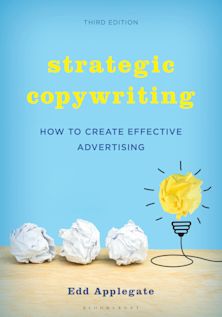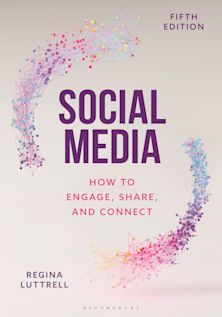- Home
- ACADEMIC
- Business & Management
- Marketing and Branding
- Marketing in Creative Industries
Inspection copy added to basket
Choose your preferred format. If you would prefer an ebook and it is not displayed below, please visit our inspection copies page.
Please note ebook inspection copies are fulfilled by VitalSource™.
Buy from Bloomsbury eTextBooks
You are now leaving the Bloomsbury Publishing website. Your eBook purchase will be with our partner https://www.vitalsource.com.
Your credit card statement will show this purchase originating from VitalSource Technologies. They will also provide any technical assistance you might require.
You must sign in to add this item to your wishlist. Please sign in or create an account
Description
The challenges of delivering value in industries as diverse as music, tourism, visual arts, heritage and cinema are different from those one might encounter in conventional commercial organisations. This textbook addresses the specific challenges of marketing in the creative industries and applies marketing theory to a wide range of international examples.
Marketers in the creative industries create and deliver customer value through the experience of creativity. The creativity of producers in these worlds – artists, curators, athletes, for example – must be transformed into an experience for customers and consumers. The link between creativity, experience and value informs and distinguishes the author's marketing model: a framework that gives students the analytical and decisional tools needed to succeed in careers in arts and cultural marketing.
This vibrant textbook combines an innovative perspective on customer value theory with practical marketing strategies and detailed case studies. The text looks at a range of creative industries, analysing their similarities and recommending a suitable managerial model for effective marketing.
Marketing in Creative Industries is an ideal textbook for undergraduate and postgraduate students taking modules in marketing for a specific creative, cultural or arts context.
Table of Contents
List of Tables
Preface
Acknowledgements
Part I: The Role of Marketing in Creative Industries
1. Creative Industries
2. A Customer-Centric Marketing Model for Creative Industries
Part II: Customer Value Analysis
3. The Consumer Side of the Market: Value, Satisfaction, Experience
4. The Business Side of the Market
5. Methods for Developing Market Knowledge
Part III: Customer Value Creation
6. Identifying Target Markets and Creating Value Propositions
7. Creating Value with the Product, The Brand and The Price
Part IV: Customer Value Delivery
8. Delivering Value to the Customer: Managing a Phygital Environment
9. Managing Customer Value Over Time: Customer Relationship Management
Part V: Organization Studies
10. Integrating Marketing and Creativity
Notes
Bibliography
Index
Product details

| Published | 19 Sep 2025 |
|---|---|
| Format | Ebook (PDF) |
| Edition | 2nd |
| Extent | 528 |
| ISBN | 9781350522619 |
| Imprint | Bloomsbury Academic |
| Illustrations | 72 bw figures and tables |
| Publisher | Bloomsbury Publishing |
About the contributors
Reviews
-
'This book is an excellent source for educators, researchers, and all those who want to know more about and understand better the creative industries and the core marketing concepts for this sector in the 21st century. In the second edition of the book, Gabriele Troilo continues to enchant the readers with a very comprehensive, clear, and visionary understanding of the concepts presented.'
Nela Filimon, University of Girona, Spain
-
'This updated edition takes a welcomed, unashamedly business-oriented approach to marketing in the creative industries. The distinguishing features of the creative industries are used effectively to frame the complex relationships that affect marketing from multiple perspectives. Written in a clear and accessible style, the text helps students and wider readers to trace the value chain. Plenty of practice questions, case studies, and examples are provided. A wealth of figures helps to illustrate concepts, patterns, and trends. Troilo's text is a considered and timely contribution that re-focuses our attention on core marketing principles and the value journey, in an era when so much attention is paid on short term attention-grabbing visuals. This is a text for serious marketeers seeking to add value to creative and cultural organisations.'
Peter Vlachos, University of Greenwich, UK
-
'Among the expanding literature on arts, creativity, and the market, Troilo has written what is, in my view, the finest, most insightful, and authoritative treatment in the field. Unparalleled in scope, the book masterfully weaves together arts marketing, classical marketing theory, and consumer culture theory, offering a conceptual clarity and sophistication that is exceptionally rare. By situating creativity within wider cultural and economic debates, and by combining theoretical rigour with a keen sensitivity to the distinctive dynamics of cultural production and consumption, Troilo provides a framework that is both illuminating and thorough. Importantly, while rich in theory, the volume remains deeply attentive to the practical realities faced by cultural organisations, making it an indispensable guide for scholars, students, and practitioners navigating the complexities of cultural markets. This is, without doubt, the definitive textbook on marketing in the creative industries, one that will remain a durable foundation for future work in the field for many years to come.'
Zafeirenia Brokalaki, Queen Mary University London, UK


































